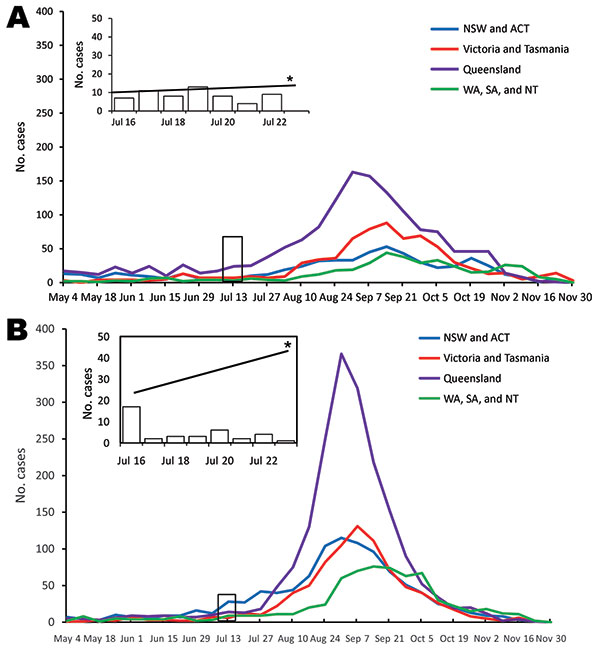Volume 16, Number 5—May 2010
Research
Influenza Outbreaks during World Youth Day 2008 Mass Gathering
Figure 1

Figure 1. Laboratory-confirmed influenza A (A) and B (B) cases during World Youth Day 2008 (WYD2008; insets) compared with national seasonal influenza data (main graphs). Data are presented as the number of laboratory-confirmed cases per day for WYD2008 and per week for national influenza surveillance. Because laboratory methods to detect community influenza activity vary between different states, the relative effects of influenza in each state are not comparable. NSW, New South Wales; ACT, Australian Capital Territory; WA, Western Australia; SA, South Australia; NT, Northern Territory. *Background rate of laboratory-confirmed influenza for NSW/ACT included for comparison. †National data are inclusive of influenza cases diagnosed by antigen detection, nucleic acid testing, and viral isolation.
1Current affiliation: University of Western Australia, Perth, Australia.
2Other members of the World Youth Day Study Group: V. Sintchenko, G.L. Gilbert (Westmead Hospital); N. Komadina, R. Shaw (WHO Collaborating Centre for Influenza):S. Adamson, J. Fizzell (New South Wales Health–Biopreparedness Centre); P.M. Fennell, F. Ba Alawi (Prince of Wales Hospital); S. Corbett, K. Weston, G. Truman, O. Nguyen, J. Paterson, S. Gabriel, C. Moreira, B. Forssman (Sydney West Public Health Unit); M. Cretikos, P. Maywood, V. Bowden, C. Lowbridge (Sydney South West Public Health Unit); and S. Williams, M. Torres, L. Heron (North Sydney Central Coast Public Health Unit).